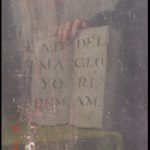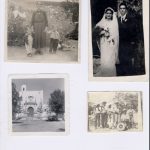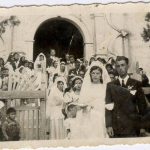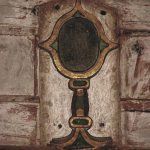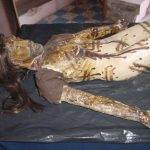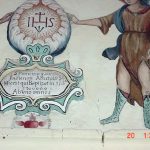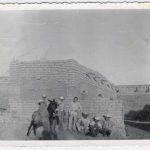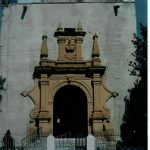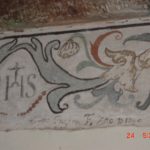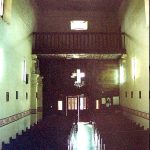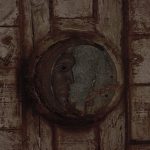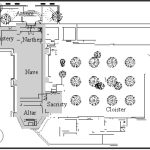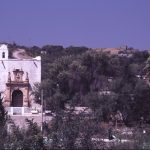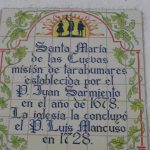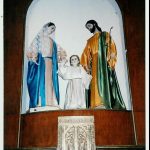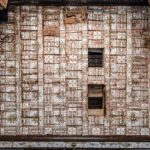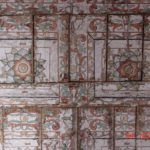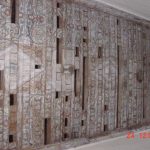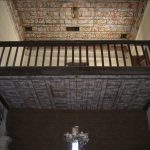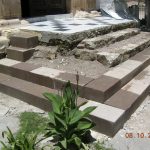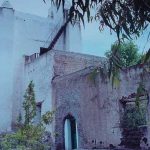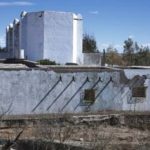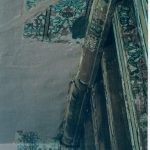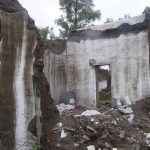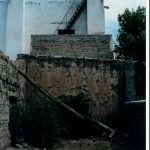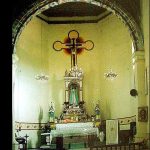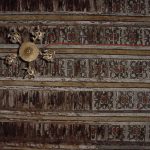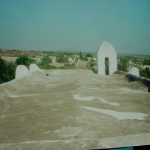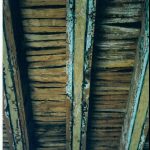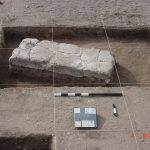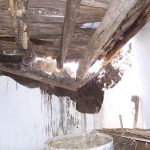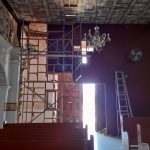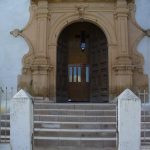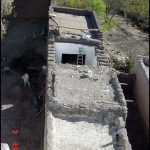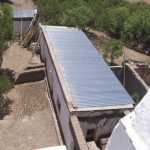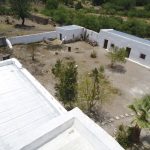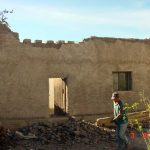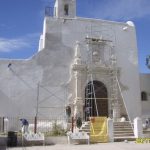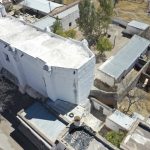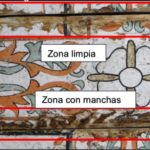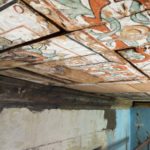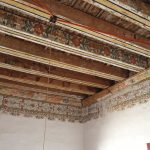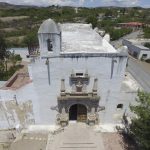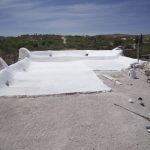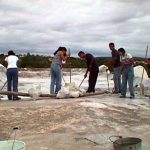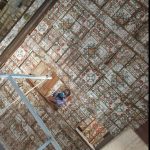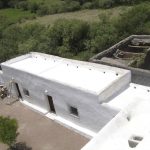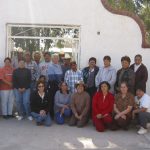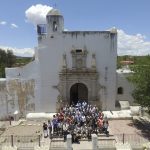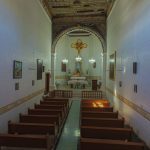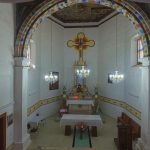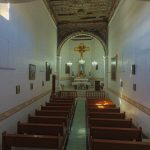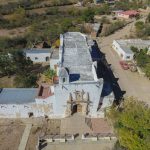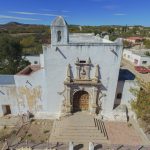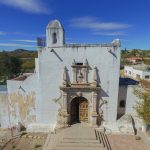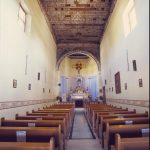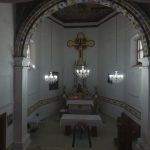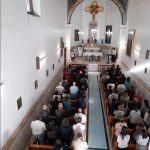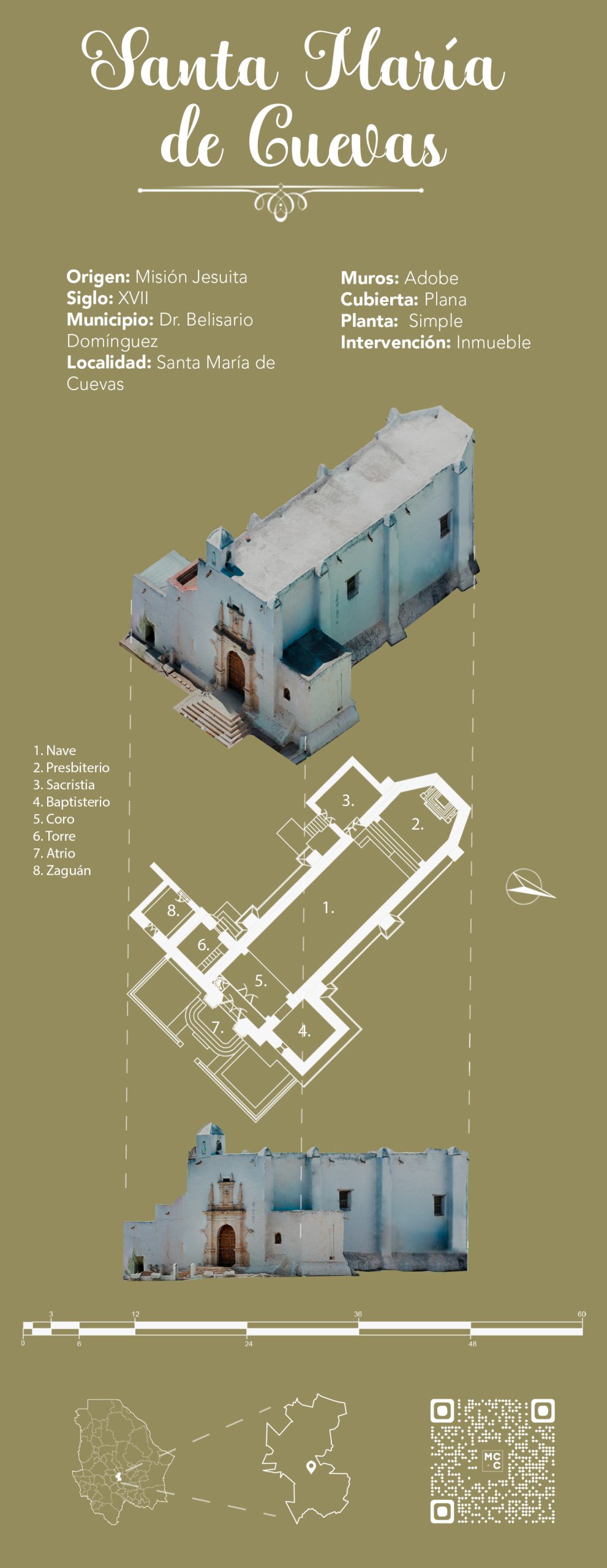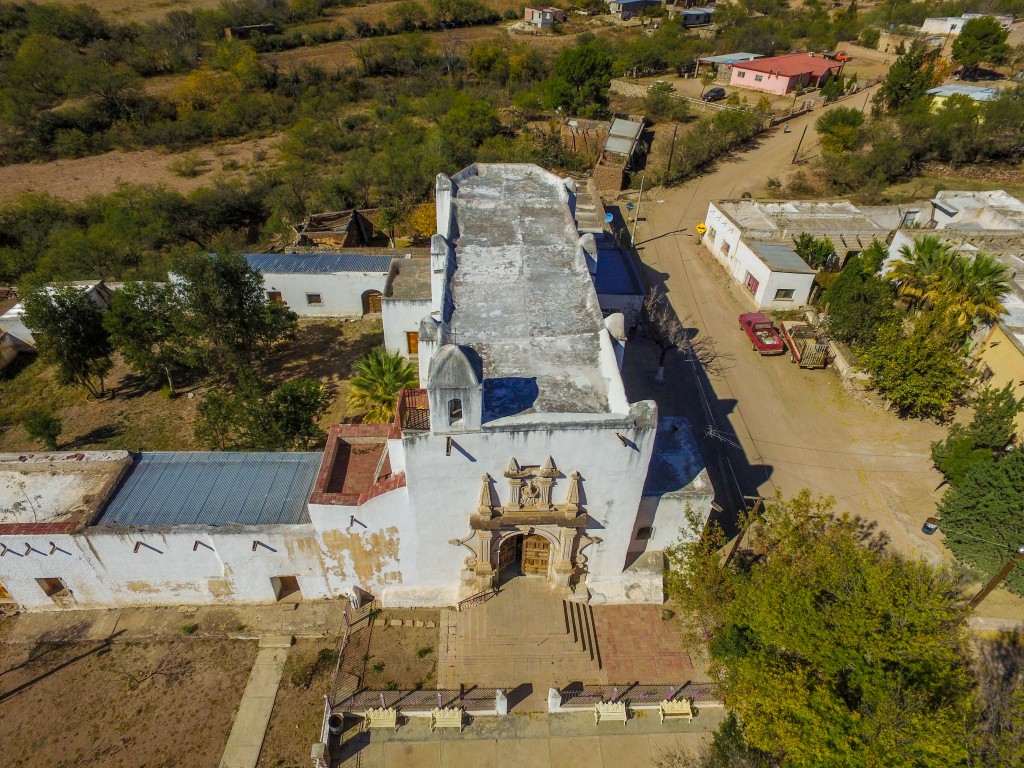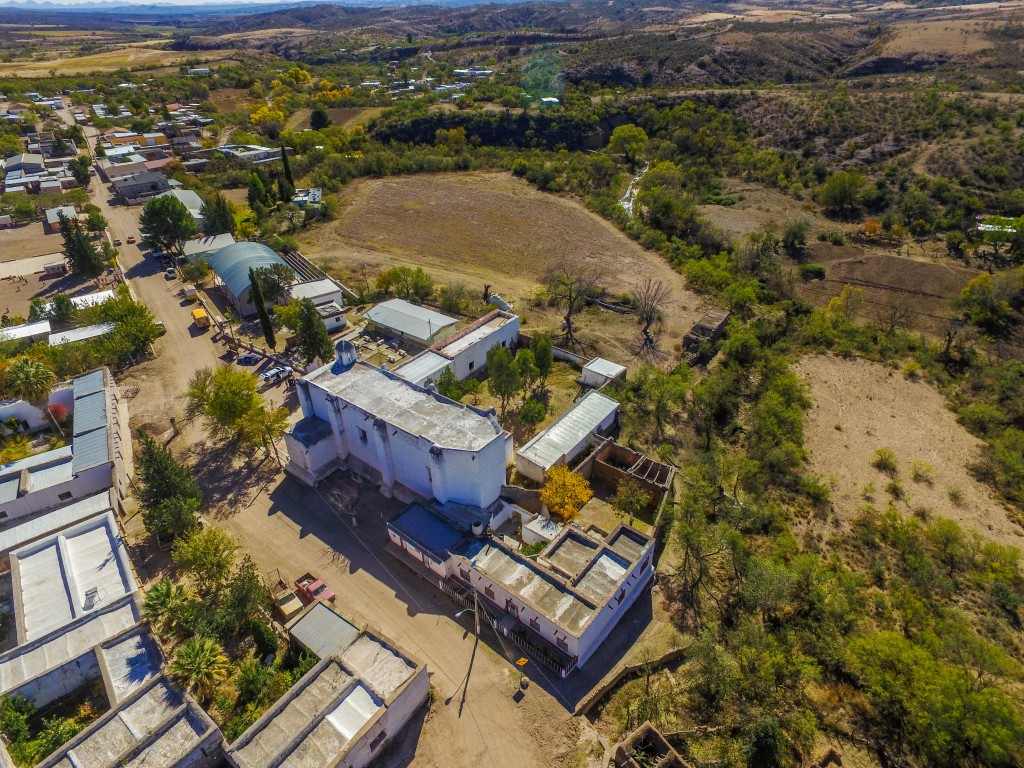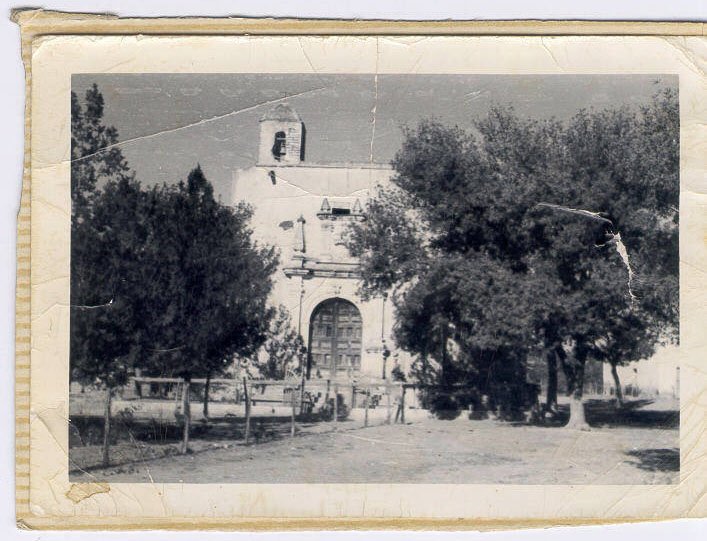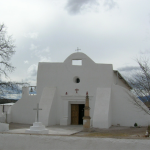Santa María de Cuevas
Santa Maria de Cuevas
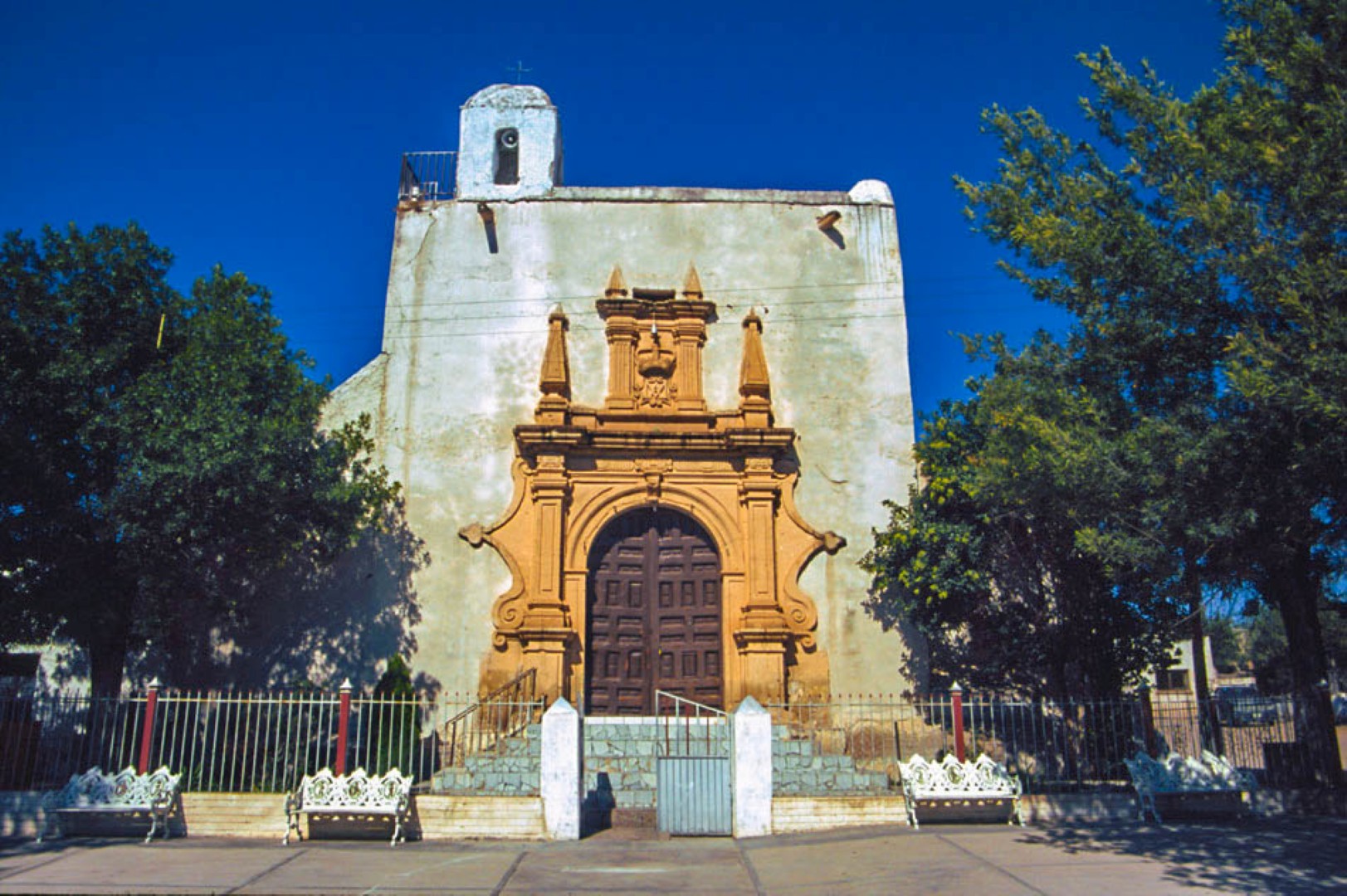
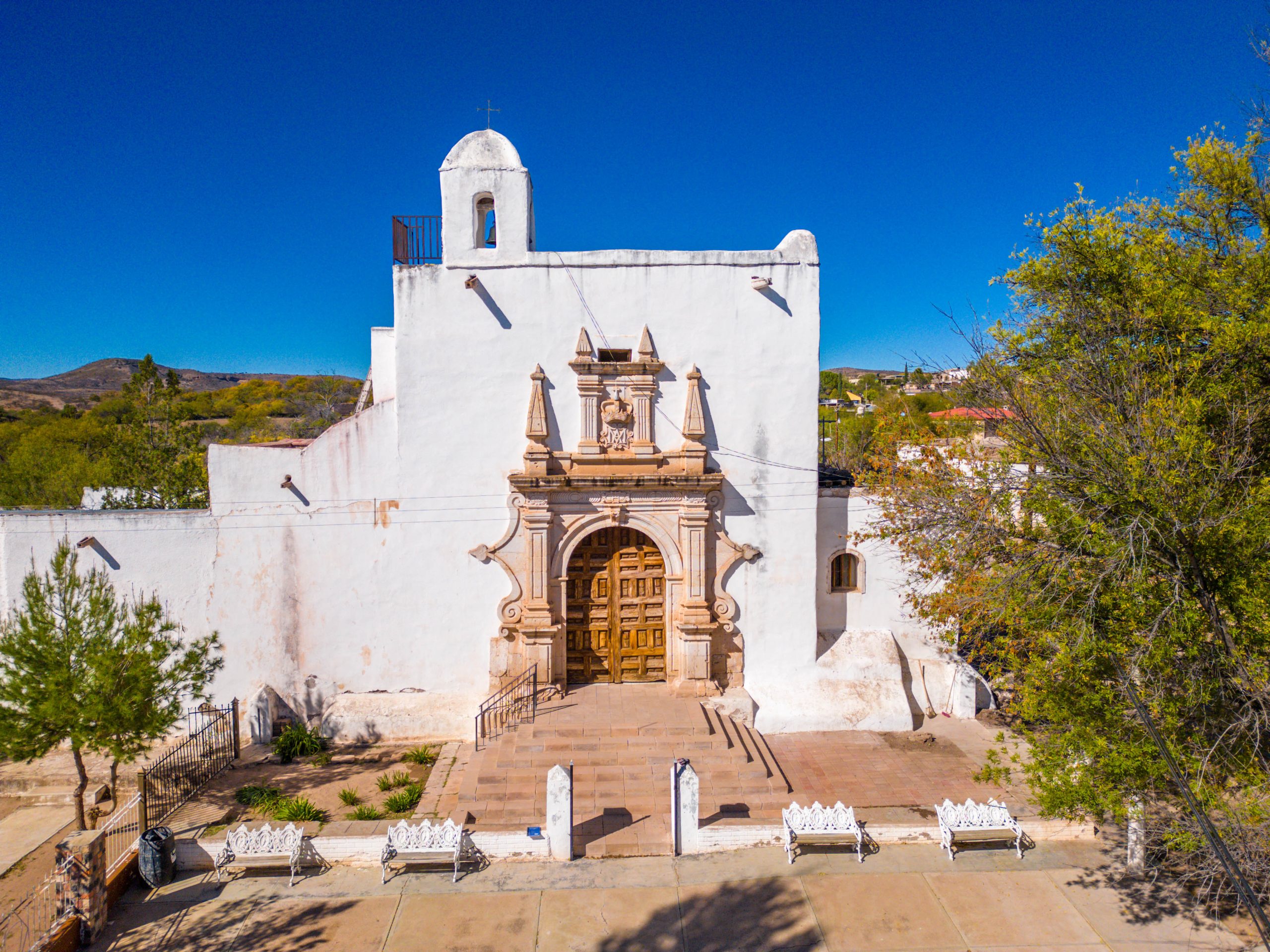
In the case of the Mission of Santa María de Cuevas, founded by Jesuit missionary fathers, it is a good example of the most monumental mission churches built around the 18th century in the region known as the Lower Tarahumara or Tepehuana, located on the slopes of the Sierra Madre Occidental. Its characteristic architectural style corresponds to the so-called “mission style.”
The main nave of the Santa María de Cuevas church measures 28 × 7.5 m; three roofs are located beside the apse (7.5 × 5 m), with a small baptistery on the north wall (4.5 × 4.5 m) and a sacristy on the south side, accessible through the presbytery (5.3 × 4.2 m).
It has several notable architectural features, such as a carved cantera stone portal, mural paintings, and an exceptionally polychromed ceiling (entablado). On the south side, it is flanked by a courtyard measuring 24 × 17 m, forming a rectangle surrounded by several rooms that were part of the rectory.
Santa María de Cuevas is possibly the church that houses the earliest figurative mural painting among the colonial churches of what was the northern frontier of New Spain (today the southwestern United States and the northern states of Mexico). It is also unique in the region for its elaborately painted wooden ceiling, constructed using the tongue-and-groove technique.
A proposal for intervention was made for the conservation and enhancement of the choir and the sotocoro roof, including the rehabilitation of its polychrome at Santa María de Cuevas, within the call promoted by EKÁ NAWÉAME.
The proposed intervention process was established based on multi-analytical studies and following international guidelines, as well as those set by the National Coordination for the Conservation of Cultural Heritage of the National Institute of Anthropology and History (INAH).
The identification of the polychrome and the materials that make up the choir and the sotocoro roof was carried out in situ using X-Ray Fluorescence (XRF) and Fiber Optic Reflectance Spectroscopy (FORS), along with laboratory techniques requiring micro-samples (approximately 2 mm), such as Fourier Transform Infrared Spectroscopy (FTIR), Light Microscopy (LM), and Gas Chromatography–Mass Spectrometry (GC-MS) for the identification of binders, that is, the painting technique. In addition, False Color Infrared Reflectography (IRFC) was performed, allowing documentation and observation of the decorative surfaces under investigation.
In the nave, the use of a plant-based binder was identified. Both protein compounds and polysaccharides were found, similar to those present in táscate exudate. In the case of the choir, the samples were so small that it was not possible to confirm its presence in this area.
The church features narrative painting rich in iconographic elements depicting the moment of the Assumption of the Blessed Virgin. It is the only example in the state of Chihuahua presenting this category of painting. In other words, each figurative and decorative element was carefully chosen to convey an iconographic message. The decoration follows the guidelines and canons of Italian Renaissance painting, influenced by the Italian missionary Luis Mancuso, who was responsible for the decoration. The figurative painting has been recognized by historians as the earliest example in northern Mexico and the southwestern United States.
The polychrome of the sotocoro roof is the only example in Chihuahua executed using the technique of perspective or trompe-l’œil(“trick of the eye”).
INVERSION: 1,490,000.00 MXN
100 %
INVERSION: 690,000.00 MXN
PHASE II
EXTERIOR WORKS
- Removal of the current roof compression layer.
- Placement of a new compression layer made of lime-and-sand mortar.
- Consolidation of the facade wall; filling of settlement cracks on the interior between the tower and the facade wall.
PHASE II $800,000.00 (EKÁ NAWÉAME 2021)
- Preliminary phase: testing samples in the laboratory to characterize the preparation base using Gas Chromatography–Mass Spectrometry (GC-MS) for the resin-gum of the táscate tree.
- Cleaning tests to remove the brown oil paint.
Phase II
- Dismantling of boards (without painted decoration).
- Cleaning of soil and animal droppings.
- Rearrangement of tablets for proper reading of the design.
- Consolidation of the polychrome only if necessary.
Phase III
- Chemical and mechanical cleaning of moisture stains and insect droppings.
- Removal of brown oil paint applied to the sotocoro beam during previous interventions.
Phase IV
- Reintegration of the preparation base.
- Chromatic reintegration of the polychrome.
- Chromatic reintegration of the new tablets.
This research, supported by CONACYT, involves specialists and students from Tec de Monterrey, Chihuahua Campus; the Polytechnic University of Valencia; and the Polytechnic University of Milan.
The project encompasses five churches located in the municipalities of Satevó, Cusihuiriachi, Rosario, Huejotitán, and San Francisco de Borja. The restoration of Santa María, conducted in parallel with this research, will not only enhance the historical and artistic value of the decorative painting in these churches but also promote Chihuahua as a cultural tourism destination, which is currently nearly nonexistent.
The participation of educational institutions from Spain and Italy will help position the state of Chihuahua in the international tourism market.
